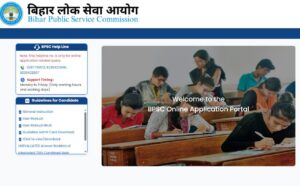Current Affairs 28th July 2023 for UPSC Prelims Exam
National Coal Index
Context: The National Coal Index (NCI) has shown a significant decline of 33.8% in May 2023 compared to May 2022.
More on the news
- The National Coal Index (NCI) registered a decline of 157.7 points in May 2023, compared to May 2022, where it was at 238.3 points, which indicates a strong supply of coal in the market, with sufficient availability to meet the growing demands.
- Similarly, the NCI for non-coking coal stands at 147.5 points in May 2023, reflecting a decline of 34.3% compared to May 2022, while coking coal index stands at 187.1 points in May 2023, with a decline of 32.6%.
About the National Coal Index (NCI)
- The NCI is a price index that combines coal prices from all sales channels, including notified prices, auction prices and import prices.
- Established with the base year as fiscal year 2017-18, it serves as a reliable indicator of market dynamics, providing valuable insights into coal price fluctuations.
- The NCI is released by the Ministry of Coal every month.
- The downward trend in the NCI signifies a more balanced market, aligning supply and demand.
Coking Coal:
- Coking coal, also known as metallurgical coal, is a high-quality coal variety that is used in the production of coke.
- Coke is a porous solid obtained by heating coking coal in the absence of air to drive off volatile components, leaving behind a carbon-rich material.
- The primary use of coke is as a reducing agent in the production of iron and steel in a blast furnace.
- Key characteristics of coking coal include low ash and sulfur content, high carbon content, and a strong ability to form coke when heated.
Non-Coking Coal:
- Non-coking coal, also referred to as thermal coal, is a lower-grade coal that does not have the necessary properties to produce coke.
- While it is not suitable for the production of coke, non-coking coal is widely used as a fuel in power plants, cement kilns, and other industrial processes where direct combustion is required to generate heat.
- Non-coking coal is more abundant and less expensive than coking coal. It contains a higher percentage of volatile matter and has higher ash and sulfur content compared to coking coal.
Current Affairs 27th July 2023 for UPSC Prelims Exam
Panchayats (Extension to Scheduled Areas) Act (PESA)
Context: The Government of Jharkhand has published draft rules for wide-ranging public consultation for implementing The Provisions of the Panchayats (Extension to Scheduled Areas) Act.
About Panchayats (Extension to Scheduled Areas) Act (PESA)
- Definition: The Parliament passed the Panchayats (Extension to the Scheduled Areas) Act, 1996 to extend the provisions of the 73rd constitutional amendment to the areas specified in the Fifth Schedule of the Constitution (Scheduled Areas).
- Through 73rd Amendment, a three-tier Panchayati Raj Institution was made into a law.
- However, its application to the scheduled and tribal areas under Article 243(M) was restricted.
- After the Bhuria Committee that recommended a three-tier structure of self-governance in the tribal areas in 1995, PESA Act 1996 came into existence.
- Most of the Northeastern states under Sixth Schedule Areas (where autonomous councils exist) are not covered by PESA, as these states have their own Autonomous councils for governance.
- Fifth Schedule Areas: Andhra Pradesh, Chhattisgarh, Gujarat, Himachal Pradesh, Jharkhand Maharashtra, Madhya Pradesh, Orissa, Rajasthan.
- Aim of PESA: PESA recognises the right of tribal communities in Scheduled Areas to govern themselves through their own systems of self-government. It acknowledges their traditional rights over natural resources.
- Features of PESA:
- The PESA conferred the absolute powers to Gram Sabha, whereas state legislature has given an advisory role to ensure the proper functioning of Panchayats and Gram Sabhas.
- Constitution Gram Sabha:
- A gram sabha is to be constituted for each village consisting of persons whose names are included in the electoral rolls for the panchayats at the village level.
- Functions of Gram Sabha:
- Gram sabha to protect the traditions, beliefs and culture of the tribal communities.
- Local disputes to be resolved by the gram sabha.
- Gram sabha to manage and protect common properties based on their traditional systems of management and protection.
- The administration to seek permission from the gram sabha in case of land acquisition.
- Gram sabha to have the rights over minor forest produce; powers to restore land to the tribals; and control over moneylending to tribals, tribal welfare activities by social organizations and local plans and sub-plans for the development of tribal areas and communities.
- Gram sabha to have the control over local markets and melas.
- Gram sabha to have rights to control the distillation, prohibition and manufacture of liquor.
- Recent Draft Rules for PESA: In Jharkhand, 13 of 24 districts are under 5th Schedule. According to the draft Jharkhand PESA Rules, 2022:
- Resolving traditional and family disputes, hearing certain cases under the IPC and having fundamental responsibility of maintaining peace and order are among rights of gram sabhas.
- The draft rules have mandated eight standing committees, including for Education and Social Justice, to be working under the gram sabha, which will have at least 50% women and a minimum of 40% people from Scheduled Tribe (ST) communities.
- The Gram Sabha shall maintain the customary law, social and religious practices of the Scheduled Tribe communities residing in its area and for their protection will take necessary steps.
- Gam sabha concerned will be the operator of the “sand ghat” (where sand is mined) or can use it for local needs at its own level.
Biosimilars
Context: A section of scientists and doctors has urged the Union Health Ministry and Department of Biotechnology not to ease norms for biosimilars.
About Biosimilars
- Definition: Biosimilars are approved new versions of innovator biologic drugs that are developed after the innovator’s patent expires.
- In other words, a biosimilar is a biological medicine highly similar to another already approved biological medicine (the ‘reference medicine’).
- Biosimilars are approved according to the same standards of pharmaceutical quality, safety and efficacy that apply to all biological medicines.
- Feature: A biosimilar drug is very close in structure and function to a biologic medicine which is made from in a living system, such as yeast, bacteria, or animal cells.
- A biosimilar has a structure that is highly similar to, but not exactly the same, as a brand name biologic.
- Differences with Generic Drug:
- A biosimilar is also a little similar to a generic version of a biologic drug, but there are important differences.
- A biosimilar is made from a biologic (natural) source, while a generic drug is made from chemicals.
- In case of biosimilars, biological entities being different (and not as it is of replica), every organism has to be engineered to produce the same therapeutic effect while in generics, the copies of API can be generated.
- Biosimilars differ from generics in complexity, in the manufacturing processes and in the data needed to demonstrate similarity for approval.
- The structure of Generic Simple and well-defined whereas for Bio-similar its Complex with potential structural variations.
- Regulatory procedure to get approval for biosimilars is complex as compared to that of a generic.
- Need for Biosimilars: Biologics are often very expensive because they cost a lot to study and make.
- The high cost of biologics can sometimes make it hard for a person to get them, even if they might be the best treatment for a disease.
- In an age where demand for managing chronic health conditions is on the rise, biosimilars provide a medium to reduce overall healthcare costs and improve patient’s access to life-saving medicines.
- Biosimilars have a shorter developmental lead time and consequently lower development costs.
- Biosimilars have been used as safe and effective treatment options for many illnesses such as chronic skin and bowel diseases (like psoriasis, irritable bowel syndrome, Crohn’s disease and colitis), arthritis, kidney conditions, and cancer.
- According to a 2019 study in Biomolecules Journal, the expiry of patents and limited biologics accessibility has created a big opportunity for biosimilars.
- Biosimilars are manufactured by using living cells, they are mainly composed of nucleic acid and sugars which are easier to metabolise and hence do not impact the environment.
- There are steps being taken to make biosimilar products eco-friendly, by reduction of water consumption, setting Carbon emission targets and promoting use of renewable sources of energy.
- Problem with Biosimilars:
- Complexity: Any biosimilar manufacturer using similar starting materials and processes may still produce a product that differs from the innovative biologic drug.
- Given the complexities of biologics, it is impossible to determine in a lab whether a biological product will work in the same way as its original innovator.
- Immunogenicity: Among various potential risks, differences in immunogenicity (ability of cells/tissues to provoke an immune response) is one.
- While generics lack immunogenicity, biosimilars are immunogenic (they are inclined to activate an immune response in the patient’s body).
- This may cause antibodies in the patient’s body to attack and neutralise the biosimilar and it could have serious consequences.
- Since the immunogenicity of biologic drugs is unpredictable, even small changes in a molecule could alter the immunogenicity profile.
- Effects of the differences between a biosimilar drug and its innovator product can only be established by putting the biologic product through clinical testing in patients to determine its safety.
- Complexity: Any biosimilar manufacturer using similar starting materials and processes may still produce a product that differs from the innovative biologic drug.
- Biosimilars in India:
- India is at a promising crossroads of Biosimilar development, manufacturing and commercialization.
- It is noteworthy that India approved its first biosimilar much before the United States and Europe.
- The first biosimilar was approved and marketed in India in 2000 for hepatitis B, although no specific guideline was available at that time for the development and marketing of biosimilars in India.
- India also received the approval for this biosimilar (Hepatitis B) in the U.S., followed by many more which were approved by the U.S. FDA, EMA, Japan, etc.
- Recently, an Indian biopharmaceutical company got the USFDA’s nod for marketing its novel biologic.
- Biosimilars for 15 innovator products are already approved in India and also selling in some of emerging markets.
- Indian companies are also taking multiple steps to strengthen their core competencies in the field of R&D, manufacturing, quality system, etc., comply with stringent regulatory requirements and build sales capabilities to tap the huge market potential of Biosimilars.
- Companies like Dr. Reddy’s labs have also contributed significantly to the growth of the Biosimilar segment in India.
- In 2007, Dr. Reddy’s launched the world’s first biosimilar rituximab in India under the brand name Reditux.
Intergovernmental Panel on Climate Change (IPCC)
Context: James Ferguson ‘Jim’ Skea of the United Kingdom has been elected as the new chair of the Intergovernmental Panel on Climate Change (IPCC) in Nairobi, Kenya.
About Intergovernmental Panel on Climate Change (IPCC)
- Definition: The Intergovernmental Panel on Climate Change (IPCC) is the United Nations body for assessing the science related to climate change.
- It was established by the World Meteorological Organization (WMO) and the United Nations Environment Programme (UNEP) in 1988.
- Aim: To assess scientific, technical, and socio-economic information relevant to the understanding of human-induced climate change, potential impacts of climate change, and options for mitigation and adaptation.
- The main activity of the IPCC is the preparation of reports assessing the state of knowledge of climate change. These include assessment reports, special reports and methodology reports.
- The assessment reports are a key input into the international negotiations to tackle climate change.
- The IPCC does not itself engage in scientific research.
- Instead, it asks scientists from around the world to go through all the relevant scientific literature related to climate change and draw up logical conclusions.
- Membership: It has 195 Member countries.
- IPCC Working Groups: It comprises three working groups, which focus on different aspects of climate science and climate change response. These groups release separate reports, which are then compiled into a synthesis report.
- Working Group I: Looks at the physics of climate change;
- Working Group II: Examines climate change impacts and adaptation;
- Working Group III: Focuses on climate change mitigation;
- Recent Focus Areas: James Ferguson has said that as new chair of IPCC, the focus will be on:
- Improving inclusiveness and diversity,
- Shielding scientific integrity and policy relevance of IPCC assessment reports, and
- Making the effective use of the best available science on climate change.
PMAY-U
Context: Ministry of Housing and Urban Affairs is supplementing the efforts of States/Union Territories by providing central assistance under Pradhan Mantri Awas Yojana-Urban (PMAY-U) ‘Housing for All’ Mission.
About Pradhan Mantri Awas Yojana-Urban (PMAY-U)
- Definition: Pradhan Mantri Awas Yojana – Urban (PMAY-U), a flagship Mission of Government of India that was launched in 2015.
- Aim: The Mission addresses urban housing shortage among the EWS/LIG and MIG categories including the slum dwellers by ensuring a pucca house to all eligible urban households.
- The period of PMAY-U scheme has been extended upto 31.12.2024 by the Union Government.
- Ministry: Ministry of Housing and Urban Affairs (MoHUA).
- Coverage: The scheme covers the entire urban area of the country, i.e., all statutory towns as per Census 2011 and towns notified subsequently, including Notified Planning/ Development Areas.
- Verticals: The scheme is being implemented through four verticals:
- Beneficiary Linked Construction (BLC): Subsidy for beneficiary-led individual house construction /enhancement.
- Credit Linked Subsidy Scheme (CLSS): Promotion of affordable housing for weaker sections through credit subsidy.
- Affordable Housing in Partnership (AHP): Creation of houses by both public and private sectors.
- In-Situ Slum Redevelopment (ISSR): Rehabilitation of slum dwellers with the participation of private developers using land as a resource.
- Features:
- It is a Centrally Sponsored Scheme (CSS), except for Credit Linked Subsidy Scheme (CLSS), which is a Central Sector Scheme.
- All houses under PMAY-U have basic amenities like toilet, water supply, electricity and kitchen.
- The Mission promotes women empowerment by providing the ownership of houses in name of female member or in joint name.
- Preference has also been given to differently abled persons, senior citizens, SCs, STs, OBCs, Minority, single women, transgender and other weaker & vulnerable sections of the society.
- A PMAY-U house ensures dignified living along with sense of security and pride of ownership to the beneficiaries.
- PMAY-U has adopted a cafeteria approach to suit the needs of individuals based on the geographical conditions, topography, economic conditions, availability of land, infrastructure etc.
- As on 10.07.2023, out of 118.90 lakh houses sanctioned under PMAY-U, 112.22 lakh have been grounded for construction; of which 75.31 lakh had been completed and delivered to beneficiaries.



 Bihar BPSC 70th Mains Result 2025 Out: C...
Bihar BPSC 70th Mains Result 2025 Out: C...
 Pax Silica Initiative: Meaning, Objectiv...
Pax Silica Initiative: Meaning, Objectiv...
 Tapanuli Orangutan: Habitat, Characteris...
Tapanuli Orangutan: Habitat, Characteris...

























